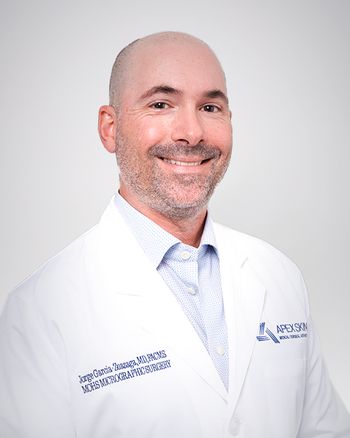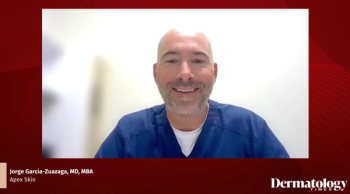
Practice model trends
The good news for the specialty is practice model options are aplenty and there’s something for every dermatologist. Betsy Wernli, M.D., discussed factors behind dermatologists opting out of solo practice and misperceptions around various practice models Saturday at the Summer meeting of the American Academy of Dermatology.
While some dermatologists still thrive in solo practice, fewer are choosing to go it alone.
The reality? About 78% of dermatologists are opting for other models of practice, in hospital and academic settings, in multi-specialty groups and in single-specialty group practice, according to the latest American Academy of Dermatology (AAD) Practice and Member Profile Survey.
“Since 2005 or so, there has been about a 30% decline in solo dermatology practices,” according to Betsy J. Wernli, M.D., president of Forefront Dermatology, a dermatologist led private equity-backed group practice with clinics in 17 states and Washington D.C.
There are a lot of potential reasons for the shift from solo practice to employed or group practice, including burnout, according to Dr. Wernli. She presented on the group practice model backed by private equity during the “Emerging Practice Models” course at the AAD Summer Meeting in July.
“There is a higher degree of burnout over the long term when you’re doing everything by yourself. Dermatologists are fighting coding changes, electronic medical record [EMR] requirements, compliance regulations and staffing challenges, while trying to find a reasonable work-life balance,” Dr. Wernli says.
Systemic changes
In fact, there are a lot of changes happening in dermatology and medicine in general.
“Medicare (CMS) is changing the game through changes in reimbursement and increased regulation. Commercial payors also are to blame; our field offers new, more expensive technology and improved care, and a dermatologist can only hope that private insurer rates will match annual medical inflation of 3.5%,” she says. “Our patients are much more internet savvy, and online reputation is increasingly important. Patient expectations also are expanding, and it is harder and more expensive to meet these expectations as a solo practitioner.”
Dermatologists are experiencing reimbursement rate pressure and increased medical insurance costs. And patient demand is far outpacing the supply of board-certified dermatologists. In essence, it’s costing more to practice, dermatologists are making less, and dermatologists are working harder to get the patients in, she says.
Physician expectations
But that’s not all that’s changing. Dermatologists are changing, according to Dr. Wernli.
“We want a different work-life balance. How we envision our practice is changing,” Dr. Wernli says.
Dermatologists need and want more help, she says.
The good news for the specialty is practice model options are aplenty and there’s something for every dermatologist.
Autonomy isn’t dead
Dr. Wernli’s experience with helping to build a large group dermatology practice is one example of how entrepreneurship and autonomy in the specialty are alive and well outside of solo practice.
“After residency, I joined what was then a small group practice called Dermatology Associates of Wisconsin; our dream was to expand access. Everyone was expected to set up a satellite clinic in a rural area to serve the rural patients. We drove to see our patients and, in that model, if you’re going to invest more time serving your patients, you have to find a way to cut down your administrative time. We had the vision to centralize our administrative services, so we could focus on patient care. And, we continued to build practices and grow. Other dermatologists and dermatology groups were attracted to our model … and partnered with us. Here we are years later as Forefront Dermatology,” Dr. Wernli says.
As Forefront’s President, Dr. Wernli still sees a full schedule of patients each week. She says that it’s possible to manage a busy clinic schedule, and support Forefront’s doctors because of the support team that the physicians and private equity partner have built and developed over the past ten years.
Cost comparisons
A dermatologist’s pay can vary according to model type. But comparing hospital, academic, group practice and/or solo practice salaries can be tricky. Generally, Dr. Wernli says, hospitals and larger groups in the same regions of the country should be in the same ballpark with pay.
Dermatologists in solo practice might have the potential to make the most money, but that can be after years of sweat equity, according to Dr. Wernli.
“With solo practices there’s usually a huge investment at the onset of the practice. Many solo practitioners don’t make any money in the first few years, yet they’re paying their staff and everyone else,” she says. “I think that model is tough to get going, but if you develop a practice where you have employed physicians you can get to the point where the dermatologist owner is making a fair amount of money.”
The biggest variable impacting pay is location, she says.
“For example, the Midwest is underserved so it tends to have a higher salary than practices on the coasts. I think it’s more regionally dependent than practice dependent,” she says.
Misperceptions
There are misperceptions about practice model options that can end up doing dermatologists and the specialty harm, according to Dr. Wernli.
It’s best not to judge each model by its bank or investors. Rather one should look at the backbone of the practice - Are there physician owners? How does the practice compensate its doctors? Does the practice have ethical principles that rule how it practices and how it treats its patients?
A common misperception about private-equity backed practices is that dermatologists will lose their autonomy because business people will dictate how they practice medicine.
“That’s not true. In our case, dermatologists are in total control of their clinics,” she says.
Another myth about private equity backing is that when private equity comes in, unnecessary procedures occur, like increased biopsies or utilization of Mohs.
“We have the data with our group that actually shows that since our private equity investment, the number of biopsies per patient has decreased. Our Mohs rates have stayed the same. And our billing for new patients, for example, is exactly the same as the national average,” Dr. Wernli says. “Just because you have an investor come in it doesn’t mean that it alters the character of your practice.”
Private equity is a source of capital that originates from two common sources. One is pension funds; the other is endowments.
“Pension funds from public workers’ state pension plans and endowments from universities like Princeton and Harvard allocate about 20% to alternatives like private equity, and that’s where the investment dollars come from,” Dr. Wernli says. “There are about 2,300 private equity firms in the market. And not all of them are the same.”
Important questions for dermatologists to ask about private equity firms include: How big is the fund or funds? What is their investment style--growth versus turnaround? How involved is the investor in the companies in which they invest? Are they active or passive investors? Are they industry-focused on medicine or technology, or do they have a variety of investment types? What is their hold period--for how long on average do they hold their companies before they seek a return on their investment?
“The average investment hold period is about six years for private equity but can be shorter or longer,” Dr. Wernli says. “I think the hold period is a key consideration. It is important for dermatologists to have comfort that the practice is being built for the long term, that doctors will have a reasonable ability to enter and exit as owners, and that dermatologists will have the ability to choose their future owner.”
This doesn’t have to be a concern if dermatologists are among those running the group. At Forefront Dermatology, the dermatologists decide who their next partner will be, she says.
In the end, no one practice type that fits all dermatologists, according to Dr. Wernli. Dermatologists should look at what’s important to them when deciding how to practice.
“We all need to stop the divisive behavior based on which model dermatologists choose and focus on the real challenges that are going to tear apart not only dermatology but medicine in general, like payor pressure, CMS requirements and government regulation in medicine,” she says. “We need to band together as dermatologists and fight the real threats and not each other based on who your financial partner is or which emerging practice model you deem right for you.”
Newsletter
Like what you’re reading? Subscribe to Dermatology Times for weekly updates on therapies, innovations, and real-world practice tips.
















